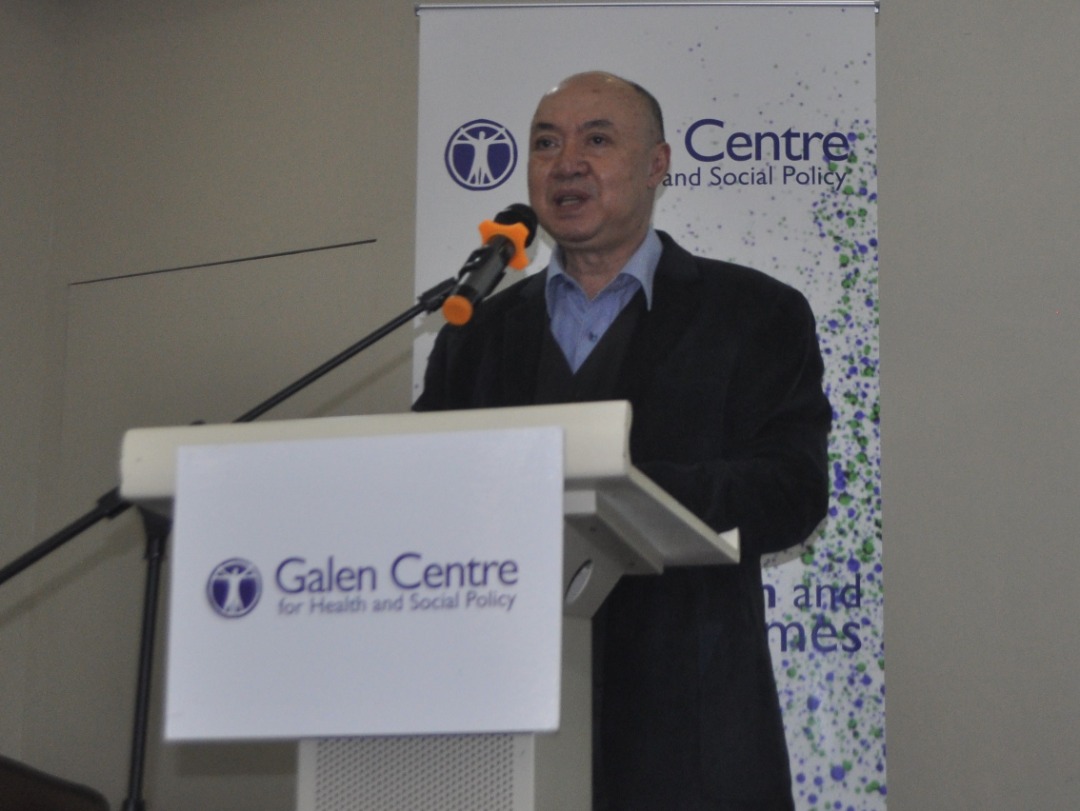KUCHING, Dec 30 — Almost half of rural clinics in Sarawak don’t have doctors while some only provide paracetamol, amid irregular services provided through air and water to the interiors.
In Sarawak, mobile clinics are set up to cater to people living in rural parts of the state, while the “flying doctors” service are provided by helicopters to natives who live deep in the jungle, and who cannot be contacted by other routes such as road or boat.
But the frequency of the Flying Doctors Services (FDS) going to villages, for example, is at most, once a month, and once in three months, at the least, said Dr Andrew Kiyu Dawie, a former director of the Sarawak State Health Department.
“And even if they go once a month, they spend three hours a day at a particular place,” he told an East Malaysia health care-centric conference that was organised by the Galen Centre for Health and Social Policy here recently.
“So, imagine that among these 30 days, for 29 days, they have nothing there. (For) 29 days and 21 hours, they have nothing there.”
Medical evacuations also can’t be carried out by the FDS, according to a Sarawak state health department official, and for most cases, patients would still have to travel by road. The FDS is limited to treating only simple and light conditions, and people would still need to get to a hospital somehow or other.
Dr Andrew added that almost half of Sarawak’s rural clinics do not have medical officers (MOs). Citing data from the state Health Department, he said as of June this year, 117 rural clinics had MOs, while 98 of them, or 45.6 per cent, did not.
Another rural health care service, the Klinik Bot Bergerak — where doctors take boats out to hard-to-reach areas only accessible by water — is only provided up to 4pm, and is highly dependent on weather conditions.
Dr Andrew, who retired from his directorship at the state Health Department in 2008, said when he was still with the department, he spoke to villagers to find a solution to the problem, and the idea of Village Health Promoters (VHP) was mooted.
A Village Health Team (VHT) — solely made up of VHPs, who are volunteers from villages — would be trained on basic health care for two weeks by the state Health Department and are provided with common drugs, so they can provide first aid to their communities, according to a University Malaysia Sarawak (Unimas) bulletin.
Dr Andrew said these include panadol and an antacid to treat peptic ulcers in the stomach lining, as villagers generally require them.
“You go to these clinics on the Flying Doctor Service, for instance, you ask them what pain do you have, a lot of them will be pointing to their epigastric pain, and (they would say), ‘It’s very painful at night. Where do we go? There’s no cure’.”
Sarawak State Health department official Dr Mohamad Halfi Mustafa, who was also at the conference, said budget is a constraint for his department as there are many places in Sarawak to cover with FDS — some 800 localities. That is why the state Health Department, through the FDS, can only serve these areas once every three months, he said.
He added that the VHP programme initially did not have a budget from the state as it was done on a voluntary basis. But as time went by, existing volunteers grew older, and fewer people want to take their place.
“We are trying our best to recruit them again, and I have to say, unfortunately, now, based on the figures alone, less than 50 per cent of them are active,” said Dr Mohamad, who serves in the Family Health division of the department.
“However, we… have expanded the service to other places so there is (some) give and take there.”
He did not specify if the VHP programme has a budget now, but said that there is a special budget for the FDS. But even then, he said the service is limited, in a sense, and other alternatives still need to be sought out.
“For example, for our medical evacuations via helicopters, we are unable to pick up all cases via helicopters and we have to select only emergency cases. And (for) most cases, (they) are still being sent by road, which takes them hours and hours.”
Dr Andrew, meanwhile, also shared statistics from the state Health Department which stated there were 101 mobile health teams, which include VHT and FDS, as of 2012 in Sarawak, seven rural community clinics, and 229 health and Ministry of Health clinics.
As of 2012, there were also 23 hospitals and 10 hospital outpatient departments in the state.
Meanwhile, a total of 170 rural clinics, as of June, have 24-hour electricity provided by the Sarawak Energy Berhad (SEB), while three have electricity from SEB for eight to 12 hours. Thirty-four have a generator, while eight have a solar energy source as well as a generator.
A total of 128 rural clinics have treated water supply, 54 get water from a gravity feed, 29 from rainwater storage tanks, and four from tube wells.
A total of 212 have internet, while three do not; 143 of them are accessible by tar road, 21 by logging roads, 19 by river, and about 35 through a varying combination of logging roads and river, air, and plantation roads.








